Water quality is tipped to become a big issue in the lead up to this year's general election.
Those working to improve streams, rivers and lakes affected by nutrient leaching, faecal contamination from stock, storm water run-off and sewage overflows have said a great deal of work is already underway.
But others have questioned whether there is enough urgency in the planning.
Coe's Ford on Canterbury's Selwyn River was a well known swimming hole in decades past. But there wasn't a family in sight during the recent school holidays -the park on the river bank was instead being used by tourists as somewhere to park their campervans.
A couple of children were playing on the shingle river banks, but they weren't splashing in the water. The Toxic Algae Warning indicator sign had the arrow turned around to red; "High Risk." So the children were passing the time by scooping out long strands of bright green slime and chasing each other with the threat of being slapped with the oozing vegetation.
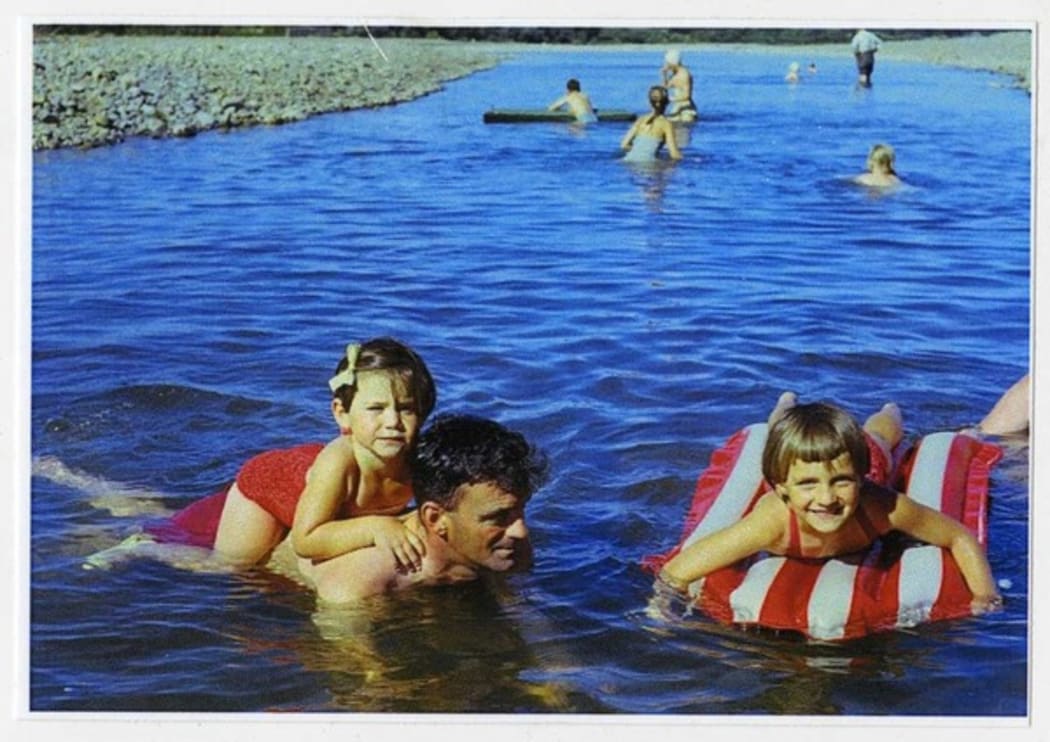
Coes Ford in the Selwyn River in the 1960s Photo: https://www.flickr.com/photos/christchurchcitylibraries/5103632403
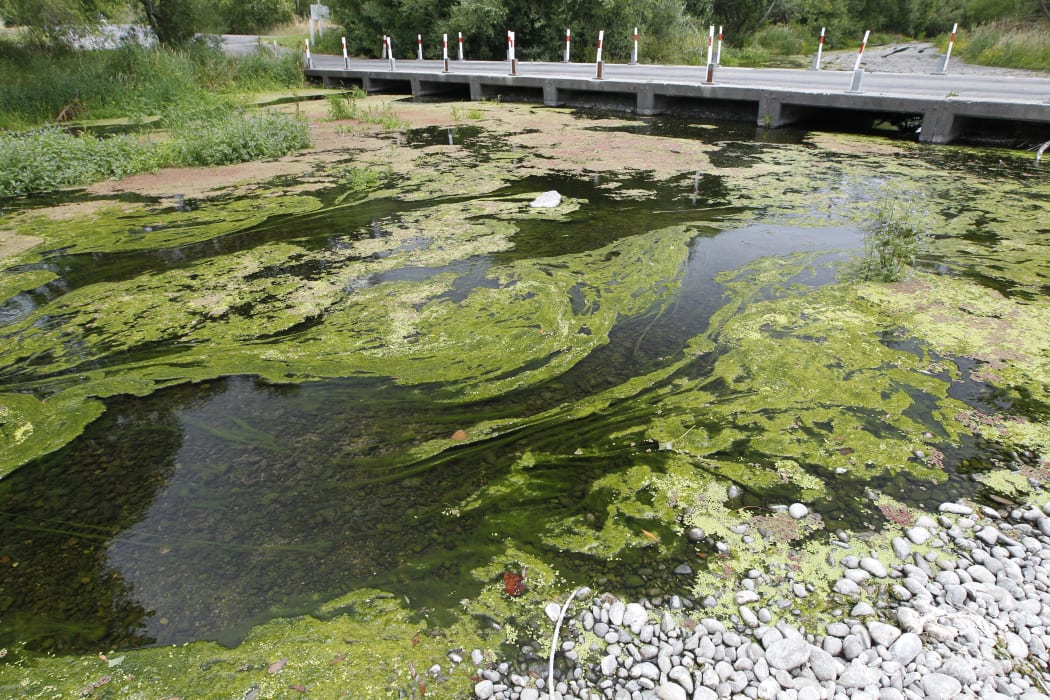
Coes Ford in Summer 2017 - hardly flowing and full of algae Photo: ( Supplied / Fish and Game )
Along with the filaments of bright green algae, there were rocks covered with a black velvety coating that looked suspiciously like the toxic algae Cyanobacteria Phormidium. There have already been warnings about this type of algal bloom in the Selwyn this summer.
Alan Strong's family has owned a bach on the Selwyn River for decades. In his youth he swam in the river frequently, something he wouldn't do now because the quality of the water is just too bad. But he is still interested in fishing.
Standing on the side of something that had once been a small river, he is desperate about the state of the lowland waterway.
"I'm not sure it would qualify as a creek now to be honest, essentially you could jump it in one clear stride. It used to be clear and was pretty much a free flowing stone river and looked really good. At the moment it's just full of algae, slime and other nuisance weed growth."
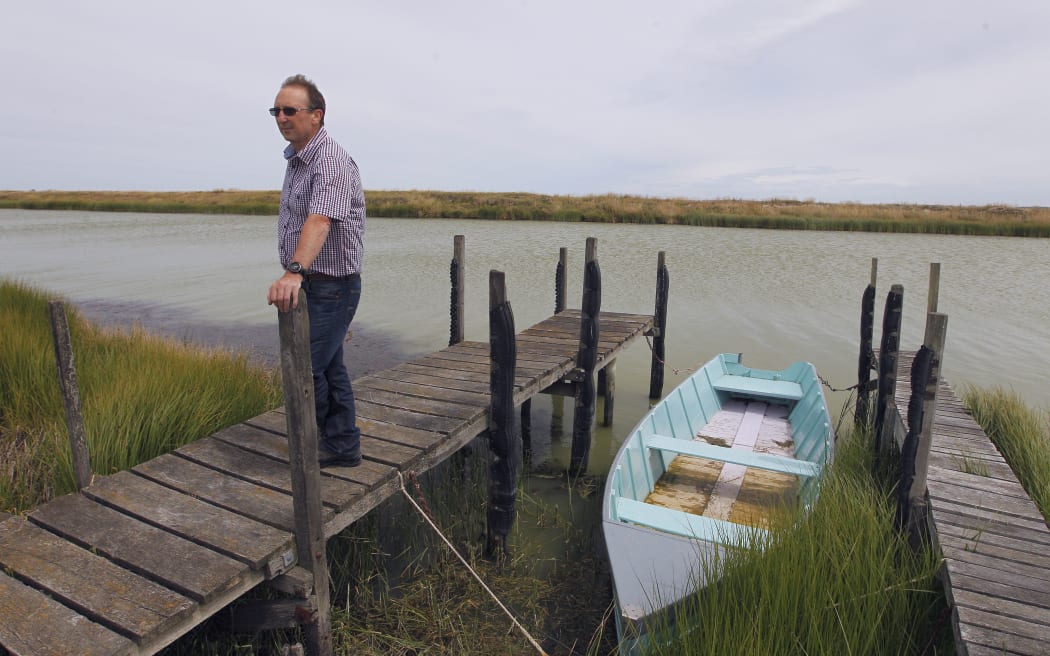
Alan Strong from Fish and Game stands in further up the Selwyn River near Te Waihora/Lake Ellesmere where the water has been turned murky green by algal bloom Photo: Fish & Game
As an engineer and a member of North Canterbury Fish and Game, Mr Strong acknowledges a number of changes have reduced the river here to a level where you would have to roll around to get wet all over. But he is pretty sure irrigation has a part to play in the quality and quantity of water trickling through Coe's Ford.

Environment Canterbury's Chief Scientist Tim Davie Photo: SUPPLIED
"Since the late 70s the climate has been drying on the east of the South Island, and during that time agriculture has intensified, and those are the two edges of the sword that has resulted in the current state of the Selwyn right down to Te Waihora/Lake Ellesmere.
"The drying climate has meant less underground recharge and the intensification has driven the need to increase dramatically the water take for irrigation," he said.
But Tim Davie, chief scientist at Environment Canterbury (ECan), points the finger in another direction.
"The Selwyn river is very low right now, predominantly because we've had 2.5 very dry winters, and that drives the ground water and the ground water levels are very low. Irrigation and water takes add to that, there is no doubt about, but that contribution is relatively small," he said.
The intensive farming also helps create the algal blooms, through increased nutrient run off, and Dr Davie said there are tight controls coming in through management plans that set out strict limits on the nitrogen outputs allowed from each of the farms.
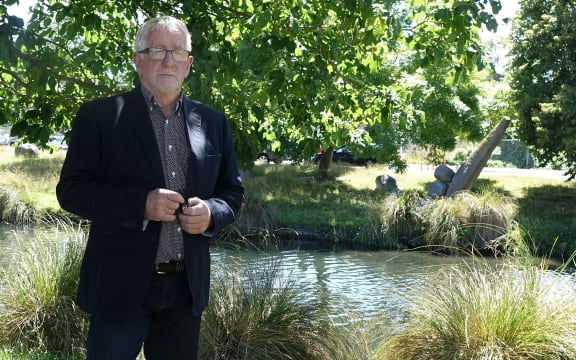
Ecan Councillor, Peter Scott, who has a long involvement in irrigation expects there will have to be restrictions on some of the regions water allocations. Photo: ( RNZ / Philippa Tolley )
Peter Scott - who has a long pedigree in irrigation - is one of the newly elected councillors at ECan, after six years of the regional council being run by government appointed commissioners.
He says no matter how much time, effort and money went into planning, those plans need to work. He is confident water management is heading in the right direction in Canterbury, but says when it comes to irrigation and areas where the resource is over-allocated it could be tough on farmers.
"They won't lose supply, but they could lose access and reliability, but we've paid attention to what the community wants, they want their lowland streams to have more water in them...it's going to require some money and it's probably going to require a bit of pain too."
But for now, the water quality problems are still occurring.
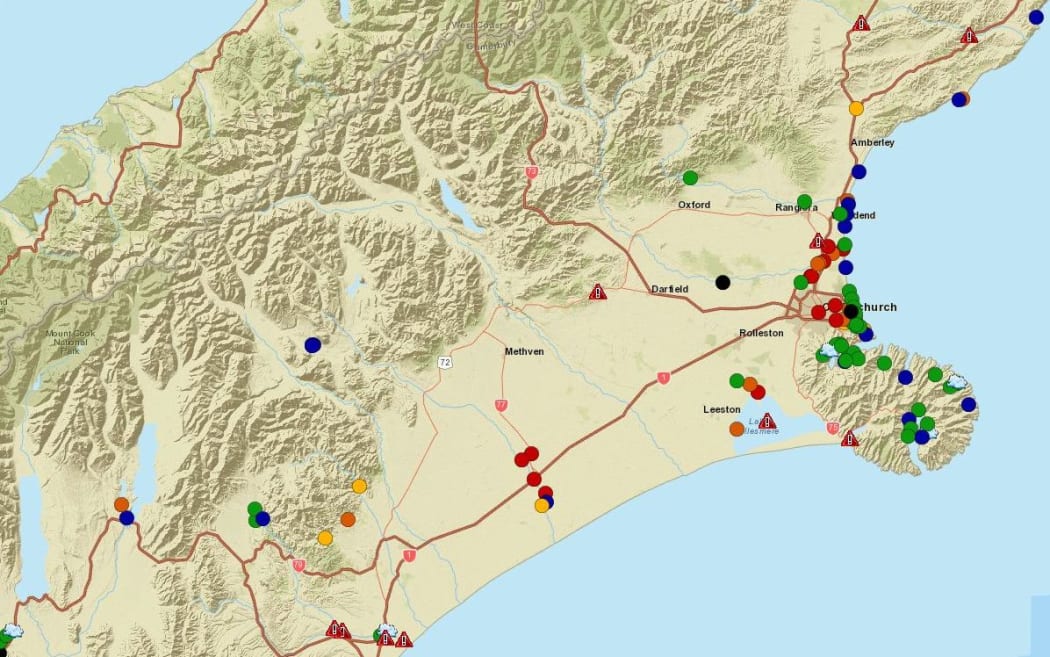
Map of water quality at points monitored for faecal matter. Blue is very good quality, green- good, yellow- fair, brown- poor, red -very poor. Photo: Environment Canterbury
(Image from ECan interactive map)
Just last weekend, Cantabrians were warned to avoid contact with 10 waterways contaminated by toxic algae. And back in December ECan launched a webpage encouraging swimmers to check water quality online before diving in.
Contact with blooms could cause rashes, nausea, stomach cramps and numbness around the mouth and fingertips add was potentially fatal to dogs, according to Canterbury medical officer of health Alistair Humphrey.
The issue of fresh water quality throughout the whole of New Zealand has been predicted to be a major election issue this year.
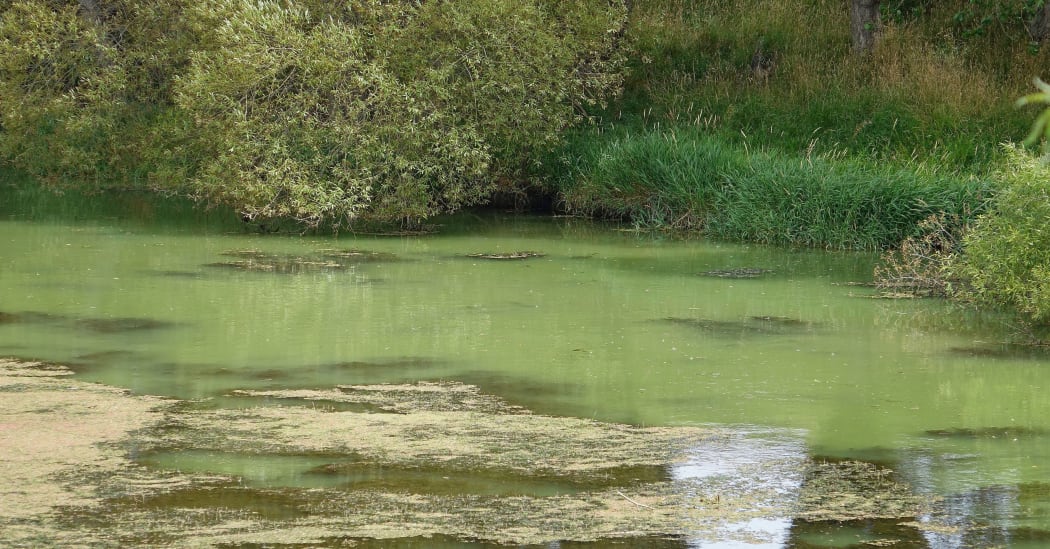
Algal bloom in the slow moving Selwyn River near Te Waihora/Lake Ellesmere turns the water a milky green Photo: RNZ / Philippa Tolley
The Green Party has said it wants a quality baseline for freshwater system set at "swimmable."
Catherine Delahunty, the party's water spokesperson, is adamant that the government is not responding to the problems affecting fresh water with enough urgency, a situation she describes as a disaster.
"Our economy is based on our environment...it costs our economy and will continue to cost millions of dollars if we don't clean up now. We can have profitable farms and clean cities based on urban design," she said.
Environment Minister Nick Smith has acknowledged water quality as New Zealand biggest environment challenge after climate change. But he has resisted efforts to make it a simple "economy vs environment".
"It is our government's view that with smart science, good farming practice and management, we are able to both improve the quality of our water and New Zealanders access to it at the same time as using that water resource to create jobs and wealth for our country."
A report on fresh water by by Statistics NZ and the Ministry for the Environment as required under the Environmental Reporting Act 2015, is due to be published in late April.

